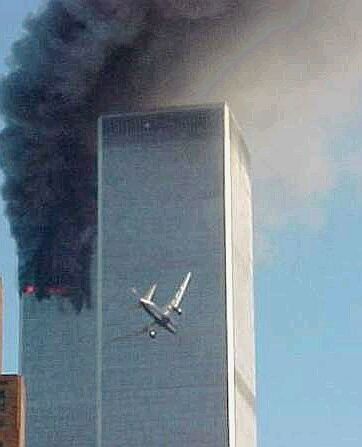ENTER
Google translates for you
ABOUT NINE ELEVEN
Genady P. Cherepanov (Apend.1)
Honorary Life Member of the New York Academy of Sciences
This is to summarize my view about the WTC collapse. I thank Mark H. Gaffney (Apend.2) for incentive to do this. He is doing an invaluable service to this society by his investigation of the events preceding the collapse. My own study totally supports his concerns and the necessity of the investigation.
First of all, who am I and why do I have the right to my judgment? I dedicated my life to fracture science and in my lifetime came across many failure events to study.
I wrote several books (G.P.Cherepanov, Mechanics of Brittle Fracture, McGrawHill, 1978, 950pp; Elastic-Plastic Problems, ASME Press, 1988, 250pp; Methods of Fracture Mechanics, Kluwer, 1997, 300pp, and a dozen of other books on the subject) and about 300 peer-reviewed papers in the field.
I was the sole editor of encyclopedia ( FRACTURE, Krieger, 1998 ). According to Who’s Who in America 2010 : my “Achievements include founding of contemporary fracture mechanics based on invariant or path-independent integrals called Eshelby-Cherepanov-Rice integrals and founding of the mechanics of nanofracture”. I was the first to introduce the integrals in fracture science still in 1967 and called them invariant.
I said this only to emphasize I am NOT a novice in this field. But, when I saw the burning WTC towers on TV I was not terrified, at all, and more concerned with the pervert psychology of suicides---I was absolutely confident that no collapse was possible. I knew building codes for towers took into account both the possibility of fire and an impact of a Boeing. The building codes were based on the best science of civil engineering and a similar event of impact and fire in 1947 in New York did not cause a collapse of the State Empire building.
The real terror was caused by the sudden collapse of two WTC towers and the 47-story tower, nearby. It happened in about one hour. If I had a slightest suspect of a collapse, I would have made a loud noise to evacuate people and save three thousand lives. Their needless death IS the root of the terror and the task for investigation. To the best of my knowledge, no one of 100,000 PhDs in engineering gave a signal to the government about a collapse during this hour. Everybody was sure nothing that bad could happen.
That’s why I was amazed when (only in 2005 because I was not engaged in that before this time) I knew about Dr Bazant who asserted he knew the collapse was inevitable as a result of impact, so that on the next day, i.e. on September 12, 2001, he wrote a paper substantiating the inevitability of the collapses and just on September 13, 2001 submitted it to the press (Z.P.Bazant and Y. Zhou, Why did the WTC collapse? J. Eng. Mech., 128(1), p1-6, 2002). This paper is a testimony of where was the civil engineering science in 2001. It provided a scientific basis for government to blame the suicides in killing 3000 people.
My perusal of Bazant’s paper discovered many severe mistakes in his calculations, false judgments, and incorrect conclusions. I wrote critical comments supported with my calculation and sent them to Bazant. Since then, he and his team have been studying the WTC collapse trying to correct his mistakes and maintain the main point of inevitability of the collapse as a result of the impact. However, this point WAS and IS a mere speculation.
I have been retired since long ago. I want only to help this country and that’s my only interest. I have no ambition in this business, but to help understand the problem.
What is wrong in what Bazant&Co. is doing?
Let me sum up the main objections unanswered by their Theory.
| . 
|



